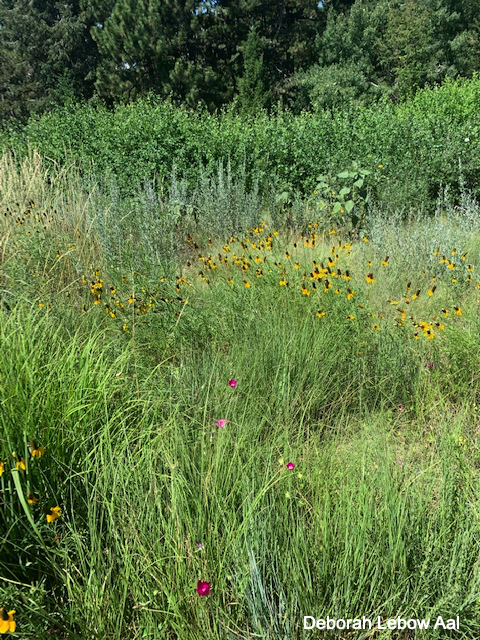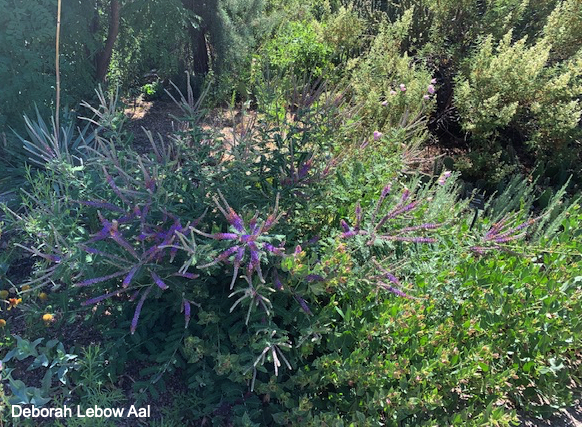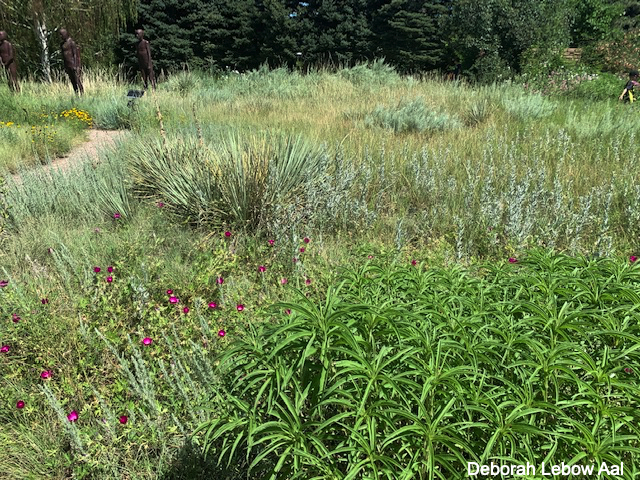By Deborah Lebow Aal
This article is a bit of a book review. There is a wonderful little booklet entitled Colorado Wildscapes: Bringing Conservation Home, put out by Audubon Colorado in 2005 (maybe time for an update?). The point of the booklet is to know your Colorado Wildscape region so that you plant the right native plants for your region. The other point of the booklet is to encourage all of us to treat our patch of land “as an integral part of the larger habitat and invite wild birds and other creatures to share the space with us…” by adopting their Audubon At Home program. The brochure states that “Audubon At Home is a program for optimists – people who believe that the things they do can have positive impacts on the world around them – people like you who know that their own yard is a place where they can get closer to nature because it’s a part of the vibrant web of life that surrounds us.”
The Wildscaping Regions in Colorado include Plains Grassland, which is most of the Front Range; Semi-desert Shrubland; Pinon-Juniper Woodland; Ponderosa Pine Forest; and Spruce/Fir/Aspen Montane. Just knowing where these regions are will open your mind to what will work and what won’t in your little wonderland. I encourage you to try and get your hands on this lovely gem of a book (it’s really a very long pamphlet) because I will only be discussing the Plains Grassland region here, the one relevant to us on the Front Range.

Wildscapes work best if you are layering your garden and including lots of variety. That means grasses, perennials, vines, shrubs, mid-size trees, and tall trees. All are important to bring wildlife into your yard. Different layers provide shelter, nesting places, protection from predators, and hopefully food sources for wildlife. Edges, particularly shrubby edges, are important to birds. It also helps to be aware of your neighboring landscapes, and compliment them.
A wonderful example of our native grassland is found at the Denver Botanic Gardens (DBG): The Laura Smith Porter Plains garden. This is an example of what Denver and the Front Range looked like prior to development. With a few exceptions, seeds were obtained from areas within 30 miles of Denver. The major plant family represented is Poaceae, the grass family. Signature plants include blue grama grass (Bouteloua gracilis) and buffalo grass (Buchloe dactyloides). DBG calls this their most sustainable garden. It thrives on natural precipitation (i.e, it is not irrigated at all!) and is resistant to heat, cold, drought and hail — all hallmarks of our Front Range climate. It is a stellar example of how to create a regionally appropriate garden and habitat for wildlife. I don’t want to give the impression that it is only grasses. There are swaths of color during spring and summer that are just gorgeous, with leadplant (Amorpha canescens), bee balm or wild bergamot (Monarda fistulosa), blue flax (Linum lewisii), poppy mallow (Callirhoe involucrata), Mexican hat (Ratibida columnifera), and prickly pear cactus (Opuntia sp.), scattered around.

The plants mentioned above are all suggestions for what to plant for a regionally appropriate Front Range yard. Pin oak, hawthorn, chokecherry, and serviceberry are all appropriate shrubs as well, and there are many others we are not mentioning.

And, here is a pet peeve of mine. The Denver native landscape is not supposed to be green. It’s a bit of a jolt, going up Highway 93, looking at all the brown and, in my opinion, glorious, open landscape. Then, there, on the hillside, is a new subdivision with bright green everywhere. Bright, green grass, and bright green trees. I can’t figure out why that doesn’t look wrong to more people. Let’s make the more muted grayish-green of the Plains garden, as seen at DBG, the norm! I encourage you to visit the Laura Smith Porter Plains Garden on your next outing to DBG. It is often overlooked, and that is a shame…
Curious to learn more about transforming your garden into a habitat with Colorado native wildflowers, grasses, shrubs, and trees? Check out our native gardening toolkit, register for an upcoming event, subscribe to our newsletter, and/or become a member – if you’re not one already!
